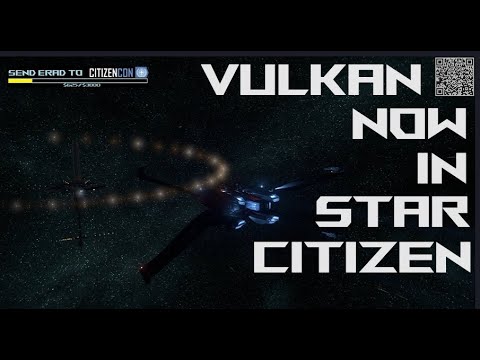The 3.23 patch for Star Citizen introduces the Vulkan renderer as a beta feature, which players can manually enable in settings. Along with optimizations for planetary weather, transit systems, AI pilot threats, and ship updates, the Vulkan renderer shows potential for improved performance once multi-threading is enabled, aiming to enhance the overall gameplay experience.
A new patch for Star Citizen, version 3.23, has introduced the first iteration of the Vulkan renderer. This beta version is an early implementation and is not the final version. By default, the Vulkan renderer is turned off, and players need to manually enable it in the settings. The developers caution that Vulkan may not outperform 3DD 111 in terms of CPU usage initially due to the lack of multi-threading for rendering submission. However, they expect a 30% improvement in CPU performance, with significant gains expected once multi-threading is enabled.
In addition to the Vulkan renderer, the patch includes optimizations for planetary weather performance, specifically focusing on default planetary ground storm effects. The update also addresses issues with Hurston’s weather, increasing the chances of non-wind durations to improve the overall experience on the planet. Other optimizations in the patch include adjustments to transit system safe teleport points, Nvidia Shadow B performance optimizations, physics and water performance improvements, and AI pilot threat adjustments for early game Bounty Missions.
Operator modes and UI updates have been implemented, such as changing the default binding to enable Quantum Drive to the left mouse button and swapping modes with a long press instead of a short press. Pitch ladders have been optimized, and cultural hints have been added to prompt mode changes when necessary. There have also been Mobiglass text readability and UI polish updates, including mini-map additions for Greex. Balancing changes for mass drivers and Banu Siege weapons, as well as updates for Arena Commander, have been included in the patch.
The patch also features updates to various ships, including the 400i, Sulan, Hull C, and Carrack, with changes to elevator panels and new stands. Feedback on the Vulkan renderer suggests that it increases computer workload by 20-30%, so players need to ensure their systems can handle it. However, reports indicate that landing zones can achieve around 50 frames per second when the renderer is working properly, showing promise for future optimizations to reduce computer workload. Overall, the Vulkan renderer is seen as a step in the right direction and may become the default renderer for Star Citizen in the future.
Overall, the 3.23 patch for Star Citizen introduces the Vulkan renderer as the primary feature, along with various optimizations and updates across the game. Despite being a beta version, Vulkan shows potential for improved performance, especially once multi-threading is enabled. The patch addresses issues with planetary weather, transit systems, AI pilot threats, and ship updates, aiming to enhance the overall gameplay experience. Players are encouraged to provide feedback on the Vulkan renderer to help shape its development and potential as the default renderer for Star Citizen.
